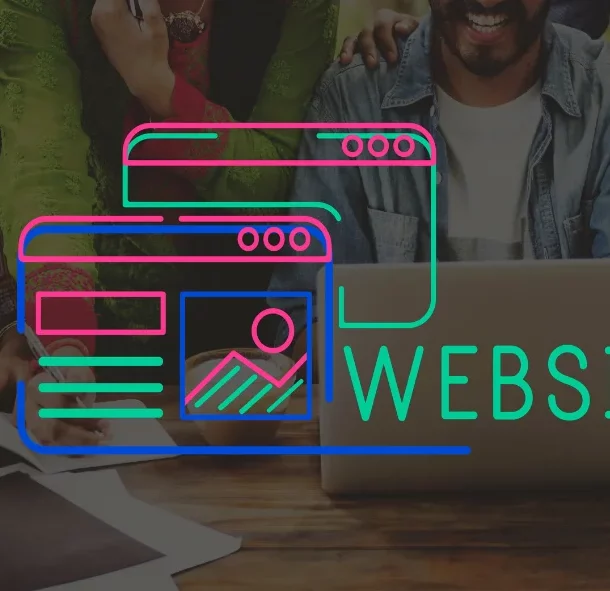
The Future of Web Design
Brace Yourself for Exciting Emerging Trends in Computing
The Future of Web Design is a dynamic convergence of creativity and technology, poised to revolutionize the digital landscape. As advancements in AI, VR, and AR continue to shape user experiences, designers are challenged to craft immersive, accessible, and responsive interfaces that anticipate and adapt to user needs seamlessly. From personalized content delivery to seamless omnichannel experiences, the future of web design holds limitless possibilities, driven by a commitment to innovation and user-centric design principles.
Imagine browsing a furniture website and visually placing a couch in your living room to see if it fits. Or ask your smart speaker to read you the daily news headlines. Emerging technologies like augmented reality (AR), voice user interfaces (VUI), and artificial intelligence (AI) are transforming how we interact with the web.
As a web designer or business owner, staying on top of the latest emerging trends in computing is crucial to creating cutting-edge digital experiences. Read on to learn about the most exciting emerging technologies shaping the future of web design.
Immersive New Realities: Augmented and Virtual Experiences
Augmented reality (AR) overlays digital elements in the real world, while virtual reality (VR) transports people into simulated 3D environments.
Statista predicts that the number of VR users will skyrocket to 2.6 billion by 2027. While VR hardware has been slow to gain mass adoption, AR is now accessible to billions thanks to mobile phones.
For e-commerce brands, AR allows online shoppers to test products at home visually. One customer named Sarah hesitated to purchase a new couch, worried it wouldn’t fit in her small apartment. But the AR feature lets her overlay an image of the couch onto a photo of her living room. Seeing the couch in context convinced Sarah to click “Buy.”
According to research by Dotdigital, 61% of customers prefer AR-enabled shopping experiences and expect the ability to “try before they buy.” Home goods and furniture are prime categories, but creative industries are also jumping in. Cosmetics brand L’Oréal uses AR “virtual try-on” for customers to test makeup colors using their phone’s camera.
Beyond shopping, AR opens new creative possibilities for experiences closer to virtual tourism. Retail brands like Jaguar Land Rover partnered with Google to create immersive “virtual showrooms.” Using AR technology powered by smartphones or AR glasses, these simulations mimic visiting a dealership showroom in person without leaving your home. Land Rover reported increased customer confidence in purchasing after exploring cars from all angles in 3D.
“It was incredible to see the SUV ‘in front of me’ with AR at scale,” said one Jaguar virtual showroom visitor. “Being able to open the doors, sit in the driver’s seat, and even check out engine detail gave me a deeper appreciation. It made me feel confident about quality and customization choices.”
Brands also incorporate VR for marketing events, employee training simulations, and bringing remote teams together in virtual offices. While specialized equipment limits mass consumer access to VR today, costs are dropping quickly. As more affordable VR devices and 5G networks arrive, brands may soon integrate VR shopping or virtual tourism adventures.
A New Generation of Voice Control and Freedom
Remember when talking to your computer sounded like far-off science fiction? With voice user interfaces (VUI), technologies can now understand natural speech patterns using AI, translate words into actions, and respond conversationally.
The recent popularization of smart speakers and voice assistants like Alexa, Siri, and Google means VUI is becoming mainstream. Adobe research shows that 55% of online adults have used voice assistants – a number projected to keep rising.
Brands are seizing opportunities for hands-free voice navigation features on their sites. One essential application gaining traction is voice search, which enables visitors to speak natural language questions to discover products more easily versus typing search terms.
Voice search can help users better articulate needs and get clarifying answers in real-time. This makes it well-suited for researched purchases and complex categories like insurance policies or travel planning.
Brands can tap into voice integration through platforms from tech giants. The conversational e-commerce company Hero enables shoppers to ask questions about products via Alexa Skills. Then, it links them to the brand’s site to purchase.
As VUI interpretation and capabilities improve, expect an influx of other voice applications on the horizon. Could the ability to dictate blog posts, social posts, or even emails be next? Hands-free voice commands could grant business users more flexibility and convenience during everyday tasks or multitasking.
More innovative Interfaces for Smooth User Experiences
The rise of voice UIs signals that typing, menus, and drop-downs feel outdated. No more clunky, confusing site navigation – the latest web interfaces incorporate more intelligent features. These include predictive search suggestions, personalized recommendations, and streamlined checkouts to ensure a smooth user experience.
Have you ever felt frustrated aimlessly searching cluttered menus and tabs on sites without guidance? In contrast, artificial intelligence (AI)-powered interfaces learn about each visitor to quickly serve tailored content.
For example, an avid hiker, Tushar, felt delighted to browse an outdoor gear site for the first time. When he clicked to view a folding knife, the site instantly served him suggested content about tents and trekking backpacks without needing to search – exactly what Tushar wanted to view next based on his interests.
By studying user behavior signals, sites can predict what people want and reduce effort through thoughtful shortcuts. Other innovations include hover cards explaining features or auto-filling forms so users type less.
Such anticipatory experiences feel like the site “gets you” – building satisfaction, loyalty, and trust. Research shows that 77% of customers get frustrated by impersonal shopping experiences, highlighting the need for customized service. More innovative interfaces leverage data to deliver just that.
More Natural Conversations With Humanized Chatbots
You’ll see more brands adopting AI chatbots in coming years – these automated tools interact using human-like, conversational language. When implemented thoughtfully, chatbots enhance customer service and sales conversations.
Home goods site Wayfair rolled out the chatbot “Wanda” to recommend products and assist online shoppers. Following the launch, Wayfair saw a 34% increase in conversions when shoppers engaged with Wanda.
Because AI chatbots can respond in real-time 24/7, website visitors enjoy instant, personalized support rather than waiting on hold or exchanging emails.
An avid online clothing shopper, Priya connected with an AI-powered chatbot to track a delayed order. Without waiting on hold or having her question buried in an inbox, the chatbot supplied up-to-date shipping status and proactively issued Priya a refund for the slow processing.
“Chatting with the bot felt like I was messaging a real, helpful person on the other end,” said Priya. “It was so much smoother than calling overloaded customer service.”
To build rapport with users, human-like conversations create trust and emotional connections missing from transactional FAQs or static forms. Natural language processing allows bots to handle more nuanced questions, empowering customers.
The global chatbot market, currently around $4 billion, is projected to grow six-fold by 2030 as more businesses adopt conversational interfaces. Soon, virtually every industry, from banking to healthcare to government services, could integrate virtual assistants to improve experiences.
Progressive, Pageless Sites Enhance User Focus
Forget navigating multiple pages – some brands are exploring long, continuously scrolling “pageless” sites to immerse visitors focused in one place. Others utilize “progressive web apps (PWAs)” that mirror the app experience from a browser.
Starbucks’ popular PWA loads quickly, enabling you to reload your card, find nearby stores, and redeem rewards. The benefit of PWAs? They use less device memory, so pages display efficiently across laptops, tablets, and mobile devices.
Pageless sites keep visitors centered on scrolling content seamlessly without interruptions from page breaks. Parallax scrolling and sticky nav menus enhance usability.
PWAs and pageless interfaces aim to deliver consistency for users, regardless of device. And their sleek, app-esque style stands out from old multipage websites. Pageless sites can increase time-on-page by keeping visitors engaged in unified visual stories.
While scrolling length limits usability, the focused experience can work well for branded content, galleries, interactive tools, and more. A “hybrid” approach combining pageless and multipage for extensive websites may balance engagement with navigational needs.
Insights to Guide Your Strategy
While visual elements and technologies constantly evolve, excellent web design focuses on understanding target users deeply. As emerging technology trends impact interfaces, experiences, and functionality, these core tenets hold strong:
- Know your audiences – Design begins with user needs, motivations, and preferences. Build experiences that simplify their lives.
- Prioritize mobile speed & optimization – Remember that website traffic is only growing more mobile-dominated every year. Ensure your site loads quickly and functions efficiently cross-device.
- Invest in research plus ongoing testing – Leverage tools like heatmaps, user recordings, and ethnographic studies to improve site interactions. Study analytics to catch points of friction where visitors struggle.
- Expect continual learning – Adopting new technology means ongoing education for designers. Support professional growth through conferences, workshops, and courses. Provide ample resources for your team to improve their skills in Emerging Technologies and Trends.
- Focus on authentic visual storytelling – Leverage new multimedia tools to craft engaging stories, not just display content. Move people emotionally to convey branding, not just logically communicate features.
- Design responsibly – Ensure accessibility, inclusivity, and ethical use of customer data as you integrate innovations like biometrics and personalization.
The sky’s the limit for the future of web design. As technology progresses, so will creative possibilities to connect with users in helpful, meaningful ways. While the frontiers of extended realities, AI, voice, and more remain unexplored, the coming years promise exciting innovation potential.
The importance of web design lies in its ability to create a strong first impression, enhance usability, and directly influence conversion rates by shaping the user’s experience on a website.
Brace yourself for fresh opportunities to guide, excite, and support your audiences. By keeping users first and embracing compassionate problem-solving, you’ll craft rewarding online experiences as new trends unfold. Also, be sure to check out our web design charlotte nc services.
Explore the cutting-edge landscape of web design in 2024, where innovative techniques and immersive experiences redefine online aesthetics.













